G E Pollott
The effect of genetic merit and production system on dairy cow fertility, measured using progesterone profiles and on-farm recording
Pollott, G E; Coffey, M P
Authors
M P Coffey
Abstract
The recent decline in dairy cow fertility appears to be a feature of several countries and is often linked to increased milk production, but its causes are not always obvious. A fully recorded 200-cow dairy herd, split into 2 genetic lines maintained on 2 production systems, was used to investigate the relationship between several measures of fertility, production, and energy balance. The 2 genetic lines were composed of a selection line, derived from the highest genetic merit bulls available, and a control line, maintained at the average of UK genetic merit at the time of mating. The production systems were a high-concentrate and a high-forage system. Thrice-weekly milk progesterone samples allowed an objective measurement of luteal cycling activity, and farm observations of estrus, services, and calving provided data on various measures of fertility. Energy balance in early lactation was calculated from daily live weight and weekly BCS measurements. Control line cows commenced luteal activity (C-LA) 6 d before selection line cows, had their first heat 14 d earlier, and had longer gestation periods by 3.7 d. They also had a lower incidence of silent heats. Cows on the high-forage system commenced luteal activity 6 d before those on the high-concentrate system, had longer gestation intervals by 3.9 d, held to first service better, had longer luteal phases and shorter interluteal periods in their estrus cycles. Characteristics of energy balance were used to see if they could account for the fertility differences between both genetic lines and systems. The commencement of luteal activity and day of first heat were analyzed using a REML mixed model approach. Mean energy content and mean energy balance over the first 25 d of lactation had an effect on C-LA and accounted for the differences found between production systems but not genetic lines. Day of energy balance nadir, mean energy content in the first 25 d, and C-LA affected day of first heat, but the differences between genetic lines were still apparent. These results suggest a link between high performance and reduced dairy cow fertility; high performance originating from different feeding systems was largely due to differences in energy balance, whereas those originating from genetics remained when energy balance characteristics were taken into account. This suggests a real genetic change in fertility due to selection for high genetic merit.
Citation
Pollott, G. E., & Coffey, M. P. The effect of genetic merit and production system on dairy cow fertility, measured using progesterone profiles and on-farm recording. Journal of Dairy Science, 91(9), 3649-3660. https://doi.org/10.3168/jds.2007-0913
| Journal Article Type | Article |
|---|---|
| Deposit Date | Nov 11, 2014 |
| Journal | Journal of Dairy Science |
| Print ISSN | 0022-0302 |
| Electronic ISSN | 1525-3198 |
| Publisher | Elsevier |
| Volume | 91 |
| Issue | 9 |
| Pages | 3649-3660 |
| DOI | https://doi.org/10.3168/jds.2007-0913 |
| Public URL | https://rvc-repository.worktribe.com/output/1430625 |
About RVC Repository
Administrator e-mail: publicationsrepos@rvc.ac.uk
This application uses the following open-source libraries:
SheetJS Community Edition
Apache License Version 2.0 (http://www.apache.org/licenses/)
PDF.js
Apache License Version 2.0 (http://www.apache.org/licenses/)
Font Awesome
SIL OFL 1.1 (http://scripts.sil.org/OFL)
MIT License (http://opensource.org/licenses/mit-license.html)
CC BY 3.0 ( http://creativecommons.org/licenses/by/3.0/)
Powered by Worktribe © 2025
Advanced Search
